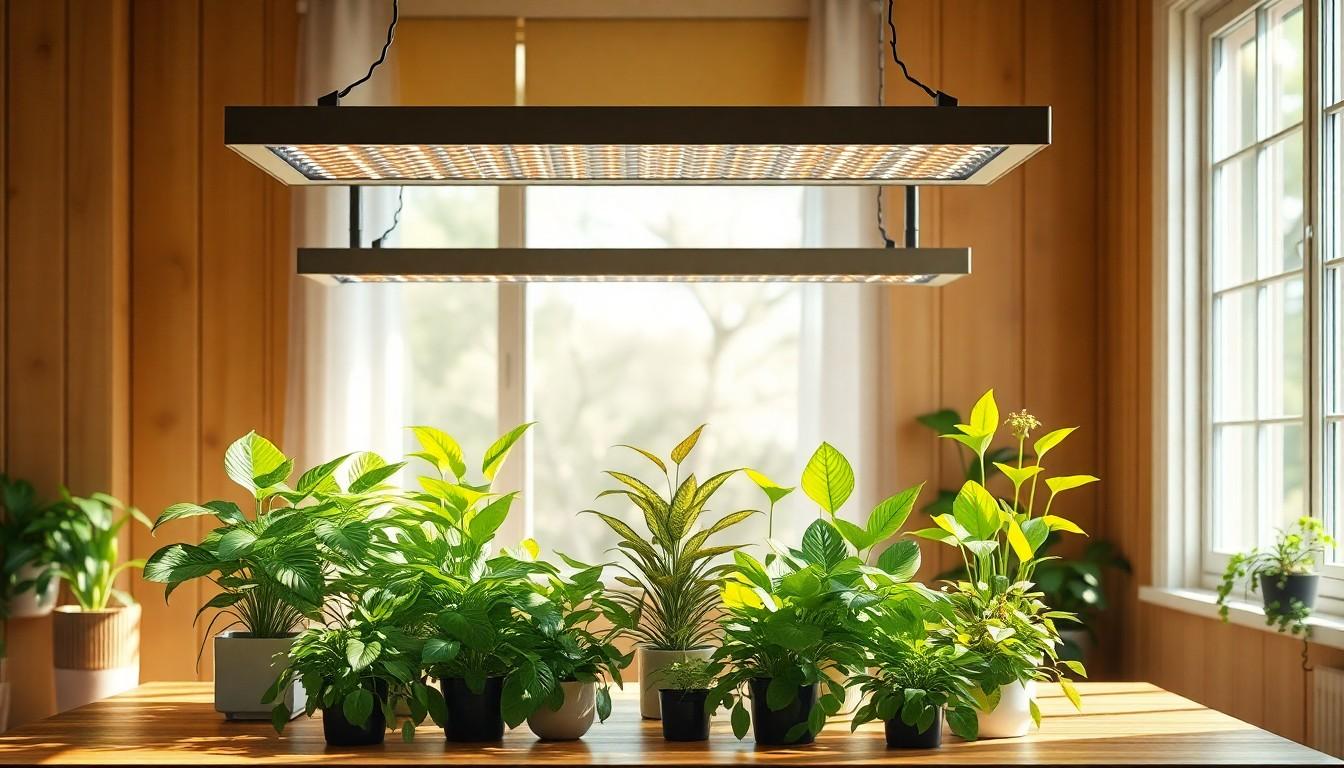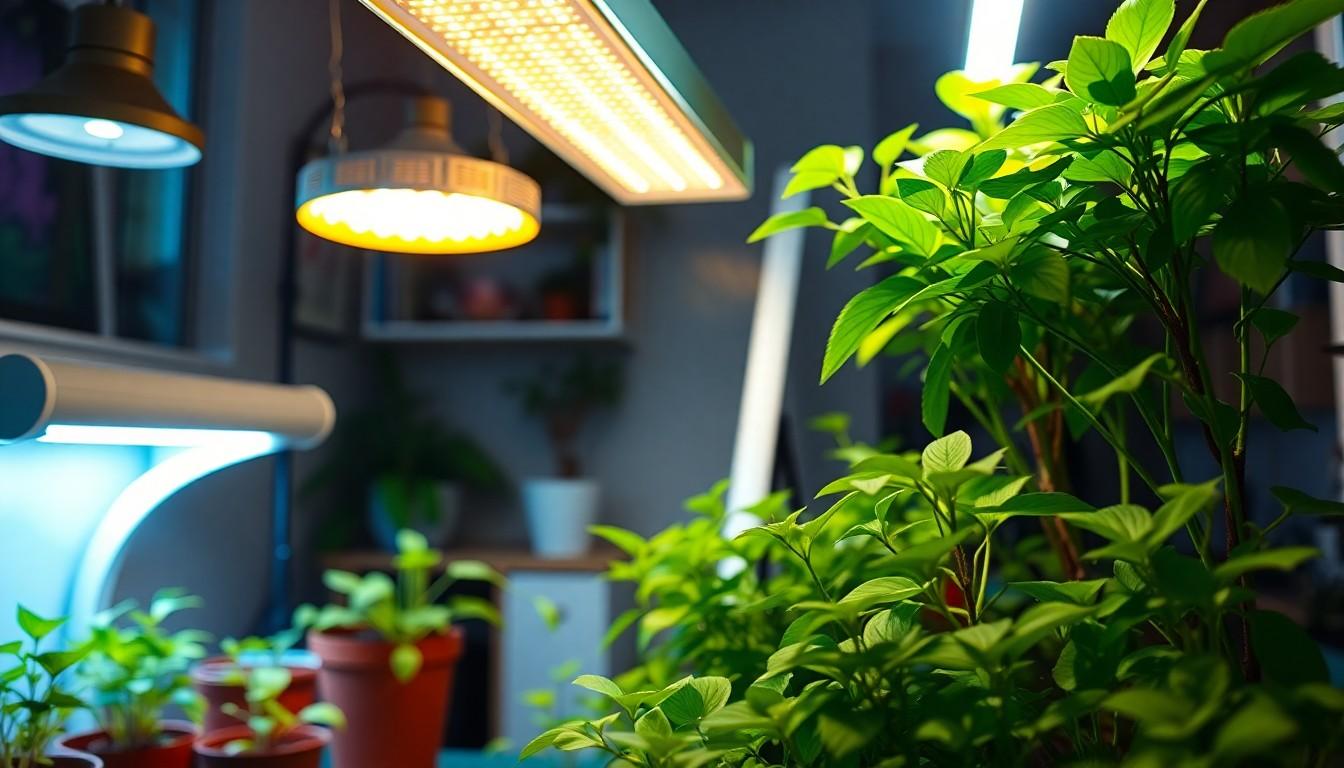The Best Fluffy Pancakes recipe you will fall in love with. Full of tips and tricks to help you make the best pancakes.

Plant Light for Indoor Plants: Unlock Vibrant Growth and Stunning Décor
Indoor plants are the unsung heroes of home decor, but they can’t thrive on love and good intentions alone. They need the right kind of light to flourish, and that’s where plant lights come in. Think of them as the caffeine boost your plants never knew they needed. Whether it’s a lush monstera or a delicate fern, giving these green companions the proper light can transform them from sad little leaves to vibrant showstoppers.
Importance Of Plant Light For Indoor Plants
Indoor plants require adequate light for optimal growth. Providing the right type of light helps plants carry out critical processes like photosynthesis.
Photosynthesis Process
Photosynthesis enables plants to convert light energy into chemical energy. In this process, chlorophyll absorbs light, primarily in the blue and red spectrums. Carbon dioxide and water then transform into glucose and oxygen. Insufficient light limits this process, impacting overall plant health. Most plants prefer at least 12 to 16 hours of light each day. Using plant lights ensures that indoor plants receive the necessary light to thrive, particularly during the shorter days of winter.
Effects Of Light On Growth
Light significantly influences plant growth and development. Intensity and quality of light affect factors like leaf size, flower production, and overall vitality. Bright light encourages compact plants with lush foliage, while inadequate light results in weak and leggy growth. For optimal results, plants might require different light conditions based on their species. Using full-spectrum LED lights can simulate natural sunlight, promoting robust growth and vibrant colors in foliage and blooms. With proper lighting, indoor plants become healthier and more visually appealing.
Types Of Plant Lights

Understanding the various types of plant lights helps in selecting the right option for indoor plants. Each type offers unique benefits tailored to different growing needs.
LED Grow Lights
LED grow lights provide an energy-efficient option for indoor gardening. They emit a full spectrum of light, supporting photosynthesis effectively. These lights typically consume less energy while producing lower heat levels, making them safe for placement close to plants. Many models offer adjustable intensities, optimizing growth as plants mature. The versatility of LED lights suits a wide range of plants, from herbs to flowering species. Additionally, their long lifespan, often exceeding 50,000 hours, results in cost savings over time.
Fluorescent Lights
Fluorescent lights serve as a popular choice for starting seedlings and growing herbs indoors. These lights produce soft, cool light, which is gentle on sensitive plants. Available in various forms, such as tubes and compact bulbs, they fit into different indoor settings easily. Coverage area expands when multiple fixtures are used together, allowing for increased light distribution. While they consume more energy than LEDs, fluorescent lights still remain efficient, providing a suitable lighting option for many plant types.
Incandescent Lights
Incandescent lights typically offer warmth and a soft glow, appealing for aesthetic purposes. Using these bulbs for plant growth is less common due to inefficiency and higher heat output. Most incandescent bulbs provide limited light spectrum ranges, often lacking essential wavelengths needed for optimal plant development. While they are widely available and inexpensive, they require more frequent replacement due to shorter lifespans. Choosing incandescent lights may work for decorative purposes, but their impact on plant health is often minimal.
Choosing The Right Plant Light
Selecting the appropriate plant light involves understanding several key factors. Each aspect contributes to the overall success in nurturing indoor plants.
Light Intensity Considerations
Light intensity significantly impacts plant growth. Bright light promotes robust growth, while low light can slow development. Plants typically thrive under varying intensities, with some requiring full sun and others preferring shade. Observing plant responses helps determine the ideal intensity. For example, succulents usually benefit from high-intensity light, whereas ferns flourish in lower light conditions. Monitoring this aspect leads to healthier plants and more vibrant foliage.
Duration Of Light Exposure
Duration of light exposure affects photosynthesis rates. Most indoor plants require 12 to 16 hours of light daily. Consistent exposure encourages growth, but too much light can cause stress. Observing changes in plant color can indicate light requirements. If leaves begin to scorch, reducing exposure time may prove necessary. Implementing a regular schedule can simulate natural light cycles, enhancing overall plant health. Timers can simplify maintaining consistent light exposure, particularly during winter months when natural sunlight decreases.
Spectrum Requirements
Spectrum requirements vary among different plant species. Full-spectrum lights provide a balanced range of wavelengths that mimic sunlight. Blue light supports vegetative growth, while red light encourages flowering and fruiting. Specific plants thrive under certain spectrums; for instance, leafy greens respond well to blue light. Understanding each plant’s needs helps in selecting the right spectrum. Additionally, using grow lights with adjustable spectrums allows for customization, ensuring optimal conditions throughout the plant’s growth stages.
Common Mistakes To Avoid
Indoor plant care involves several considerations, and avoiding common mistakes ensures healthy growth. Recognizing pitfalls is essential for maintaining vibrant plants.
Overexposure To Light
Overexposing indoor plants to light can lead to leaf scorch and wilting. Providing more than 16 hours of direct light daily causes stress, even to light-loving species. Prolonged exposure to strong light can bleach leaves, diminishing overall plant health. Signs of overexposure include brown tips and crispy leaves, indicating a need to adjust light levels. Balancing exposure duration is crucial; finding the right amount of light supports photosynthesis without causing harm.
Incorrect Placement
Incorrectly placing plant lights affects growth significantly. Position lights too close, and plants may suffer from heat stress. If lights are installed too far away, plants may not receive adequate light for photosynthesis. Each species has unique requirements; some thrive in bright light while others prefer lower light levels. Experimenting with light placement helps identify the best position for optimal growth. Monitoring plant responses aids in finding that perfect spot for lights, encouraging robust foliage and vibrant colors.
Conclusion
Choosing the right plant light is vital for the health and vibrancy of indoor plants. With various options available it’s essential to consider the specific needs of each plant species. Full-spectrum LED lights stand out for their efficiency and ability to mimic natural sunlight. Proper light intensity and duration play crucial roles in promoting growth while avoiding common pitfalls like overexposure.
By understanding these factors and experimenting with light placement, anyone can create an ideal environment for their indoor plants. Ultimately, the right lighting not only enhances plant health but also transforms any space into a lush and inviting oasis. With the right approach, indoor gardening can flourish and bring joy to any home.
